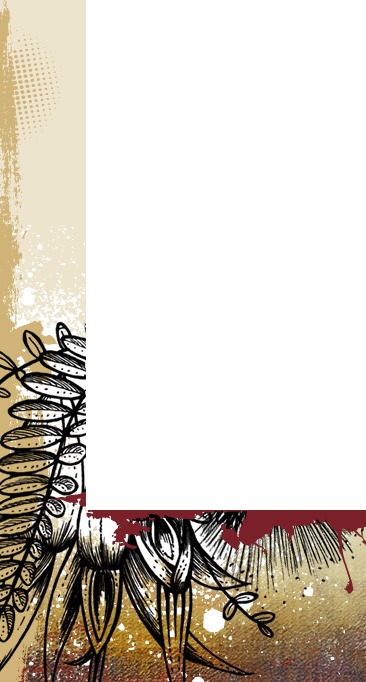Presentations
The two days of Webstock Conference Proper will a veritable banquet for your brain of inspiration, education, information and illumination. Check it:

Scott Thomas
Web design that grabs people
Join Scott Thomas, a lead web designer on President Obama's electoral campaign, as he explains how to design online communities that resonate and motivate. All too often, discussions of analytics, clickthrough rates, and search engine optimization cloud the important truth that online campaigns and communities are for human beings. Come discover how to use superior design, authentic messaging, and valuable content to delivering resonant messages that connect with your audience through the noise of the Internet.

Brian Fling
Brian does the Andrew Sisters
Brian Fling will be performing songs by The Andrew Sisters and from popular Broadway musicals.
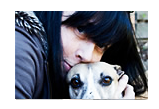
Lisa Herrod
Designing for Diversity - Inclusive Design & the User Experience
User experience design should, by its very nature be a representative and inclusive process. But even now we continue to see most UX professionals missing opportunities to integrate accessible design into UCD processes.
Why is it that we continue to segregate diverse users from our research and design processes in ways that we would never accept in real life environments? And at a time when user experience design and ethnography on the web is hitting an all time cool factor of eleven, why does 'disability' continue to intimidate instead of being the most fascinating area of user research we can do?
Well, we're going to fix that.
It's time to stop segregating people and end exclusive design practices. It's time to take a more inclusive, holistic approach to designing for diversity and accept that the front end dev isn't the only person responsible for building accessible websites. But how do we do it?
This presentation is for anyone that works on the web, whether they're developers, designers... even Business Analysts. Just wait and see...Inclusive Design is going to be the most interesting part of your job in 2010!
It's so easy, you'll be amazed you didn't think of it yourself. Seriously.

Bek Hodgson
Designing for Participation
Most everyone has something of value they long to share or contribute. Whether an artisan is seeking out a market for their handmade goods on Etsy, an unpublished author finding an audience on Blurb, or a hungry mind adding context and relevance to a Wiki page, empowering participation is invaluable. How can the tools and applications we build for the web further enable such a fundamental desire to engage? This presentation will explore designing environments that inspire and reward participation and will demonstrate how such practices can be integrated into widely varied applications.
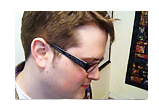
John Resig
How jQuery Makes Hard Things Simple
jQuery does a lot to make some really complicated JavaScript and DOM scripting simple. In this talk you'll learn some advanced jQuery techniques for simplifying your code. Additionally we'll look at some of the recent changes in jQuery and see how to apply them to your application.

Toby Segaran
Practical Mobile JavaScript Development
Cool stuff people have done with data; weird things they've found; lovely pictures they've made, and how often people screw things up.

Esther Derby
State of the Art Management
"The biggest problem that most any company in the Western world faces is not its competitors, nor the Japanese. The biggest problems are self-inflicted, created right at home by management that are off course." W. Edwards Deming.
Deming said it years ago, and there's ample evidence that managers in many organization are still off course. We could continue to lament the sorry state of management; but I'm not so interested in that.
If management are off course, what course should they be on? If managers are to succeed in building companies that deliver valuable software, they need to see the system, work on the work, and out lean the competition. In this talk, I'll outline how managers can do all three.

Chris Shiflett
Security-Centered Design: Exploring the Impact of Human Behavior
Security is more than filtering input and escaping output (FIEO), and it's more than cross-site scripting (XSS) and cross-site request forgeries (CSRF). Security isn't even always black and white. In order to create a more secure user experience, we need to understand how people think. Perception is as important as reality, and meeting user expectations is a fundamental of good security. In this multifarious talk, I'll explore topics such as change blindness and ambient signifiers, and I'll show some real-world examples that demonstrate the profound impact human behavior can have on security.

Ben Cerveny
Off the Grid: New Models for Designing Games, Products, and Places
Emerging toolsets in digital design allow creators to rapidly explore many possible combinations of attributes and sculpt solutions out of algorithmically evolved modular components. These tasks might come to resemble the tending of a garden of generative processes, rather than the programming and engineering tasks we engage in today. From where are these new models emerging? and how might designers and engineers of today think differently about their domains in the coming decade?
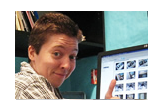
Shelley Bernstein
Fostering Personal Connection to Place
How does a museum in Brooklyn foster community? Through a willingness to recognize the what the power of people can bring to its content, an understanding that experimentation is key and failing (fast) is optimal and working to do more with less by empowering our community to help tell our story. This session will explore the community-driven mission of the Brooklyn Museum and explore the different ways this non-profit has worked to grow a community of visitors online and foster relationships that bring people through our doors.

Jeff Atwood
Stack Overflow: Building Social Software for the Anti-Social
Through interpretive dance, Jeff Atwood, will share his experiences of building StackOverflow.

Regine deBatty
Please, don't let it be interactive
There used to be a time when I wouldn't set foot in a 'new media art' festival if I wasn't promised an 'interactive experience'. Those were the days! After several years of waving the arms in the air, clicking, jumping, shooting, pushing and pulling, I realized I had had enough of interactivity for the remainder of the 21st century. What happened to the old me? Is it already moth-eaten? Or is there something fishy and faulty in the concept of interactivity for the Youth from 7 to 77?
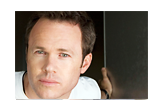
Rives
The Word Wild Web
One poet's journey from page to stage, with pit stops in HTML, travel, weird fortune, memes, happiness and other fancy stuff.

Eric Ries
The Lean Startup
High-tech product development projects are notoriously difficult to manage. They come in over budget and behind schedule, draining cash reserves and squandering revenue opportunities. Many fail outright. Often times, when customers hands finally touch the product, it is unusable, buggy, or defective. Worst of all, the software may work as specified, but there are simply no customers willing to purchase it. All of these problems share a common cause: the tremendous waste inherent in an undisciplined approach to imagining, designing, and building new products.
The current macroeconomic climate presents unparalleled opportunities for those that can thrive with constrained resources. The Lean Startup is a practical approach for creating and managing a new breed of company that excels in low-cost experimentation, rapid iteration, and true customer insight. It uses principles of agile software development, open source and web 2.0, and lean manufacturing to guide the creation of technology businesses that create disruptive innovation.
This presentation will empower entrepreneurs and managers to:
- Identify a profitable business model faster and cheaper than your competitors.
- Continuously discover what customers want to buy before building or making follow-on investments in new features.
- Ship new software at a dizzying pace: multiple times a day while improving quality and lowering costs.
- Build a company-wide culture of decision-making based on real facts, not opinions.
In this presentation, serial entrepreneur Eric Ries will share practical solutions based in his work building IMVU to more than 25 million members worldwide and his experiences consulting to more than a dozen technology startups.
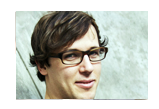
Daniel Burka
Iterative Design Strategies
User interface design is an iterative process - the design of Digg and Pownce have been a study in evolution and adaptation. This talk will inspect the why and how of these iterations by looking at specific case studies from the two projects as well as previous client work Daniel has tackled.

Amy Hoy
Shift+Cmd+R: Hard Refresh Your Design
Watch out, there's a plague afoot! A plague of what, you ask? A plague of same-y-ness! Blogs, apps, sites --- they all look the same. The web has become a place of templates rather than innovation. That means big wins are available for he and she who would dare to break the mould. Learn how to break out of the same-y rut, catch your accidentally copying, and create sites and apps that dare to be different. It'll be just like Zero-Based Accounting, but fun.

Mike Davidson
When Your Idea Doesn't Suck: How to stop working for clients and launch a startup
If you had a penny for every bad new business idea you came up with, you might be rich. What happens, however, when you have that one *great* idea? Will you be ready to develop it into a company and make it fly? In this talk, we'll cover the end-to-end process of turning an idea into a successful company, including:
- Identifying what is and isn't a great idea.
- Finding your co-founders.
- Incorporating and splitting equity.
- Leaving your current job.
- Getting and managing investors.
- Operating your company.
- Entertaining and negotiating an acquisition.
- Managing your career, post-acquisition.
Many great ideas have been derailed by unwise execution along the way, and many have never even gotten off the ground because the inventor was too busy with client work. This talk aims to put you in the catbird seat for the next time inspiration strikes.

Lachlan Hardy
Building The Open Web
The Open Web is an evolving term that encompasses technologies from web standards stalwarts like HTML, to almost-mainstream buzzwords such as OpenID, and on to emerging specifications like PortableContacts, but it's more than that. It is a philosophy.
It is the dream of technical building blocks that mesh together to discover and define identity, authorise accessible data, and validate membership of social or professional groupings. It's one big personal data party and everybody on the web is invited.
Lachlan Hardy will cover specific technologies and their usecases, showing how they plug together to make a cost-efficient open stack. He examines what the Open Web really means, how it works, and how you can use it to reach more people, more powerfully.
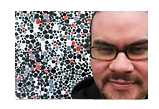
Sebastian Chan
Continuous refinement and data driven dynamic personas
As we all know, launching a new site is just the beginning. Continuous iteration and refinement are lofty goals but often in content rich sites changes are slow and time consuming. You've probably noticed the headlines on of news articles on newspaper websites subtly changing throughout the day - how might this work for other less 'time sensitive' but equally content rich sectors? In this presentation I will walk through some data driven changes we're making to a cultural website using a mix of simple web analytics and custom metrics to segment visitors and gather 'real user' personas and tailor and tweak content production on the fly.
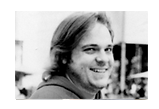
Thomas Fuchs
I Can't Believe It's not Flash!
Fun overview of all the incredible things that can be done with JavaScript - without resorting to Flash. Like interactive charts, SVG graphics, incredibly rich UI with key commands, audio visualizations, etc. Learn what you can do, and how you can start to do it (translation: code! tech!).

Kevin Rose
10 Tips For New Web Entrepreneurs
Kevin will share some strategies to help grow and promote your web business, as well as pitfalls new entrepreneurs should avoid.

Adam Greenfield
Elements of a Networked Urbanism
Even though, according to the statistics of the UN Population Division, the final shift only happened at the end of 2008, it is already a cliche to note that humanity is now predominantly an urban species. We think we understand what this means, but the truth is that cities themselves are changing: the urban fabric, in the developed and developing world both, is increasingly being reimagined as a field of interactive, networked information-gathering, -processing, -storage and -display resources.
What happens to urban form and metropolitan experience under such circumstances? What are some key implications for us, as designers, consumers and, most importantly, as citizens?

Jeff Veen
How the Web Works
Turns out that the fundamental principles that lead to the success of the web will lead you there, too. Drawing on 15 years of web design and development experience, Jeff will take you on a guided tour of what makes things work on this amazing platform we're all building together. You'll learn how to stop selling ice, why web browsers work the way they do, and where Rupert Murdoch can put his business model.

Mark Pesce
Dense and Thick
It may be hard to believe, but we're only just at the very beginnings of the web revolution. In the first fifteen years (1994-2009), the human world of culture and civilization was sucked into the black hole of cyberspace. Now the real world is poised to follow. Augmented Reality (AR) shows that when we peer through a portal, and look upon the world, it's almost embarrassingly empty of our annotations. That data is there - the world is the database of itself - but it can't be brought immediately to hand with a search or a gesture. That's the next place we will go: we will build a virtual body for the real world, a dense database of everything, both natural and artificial. In fifteen years' time, we'll wonder how we got along without it.
This means that the clock has been reset. Everything we thought we knew about how the Web works, what the Web does for us, and who controls the Web is up for grabs, once again. We will see bright shining stars - and sudden, brief supernovas - just as we did in the Web's early years. The opportunities are breathtaking, the innovations will be flying fast and thick. All of this is now within our grasp.

